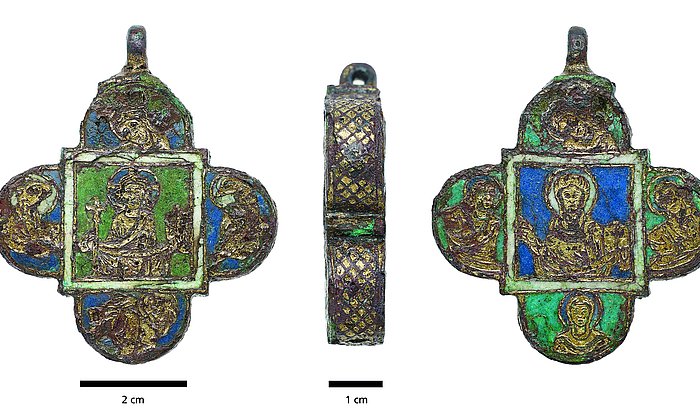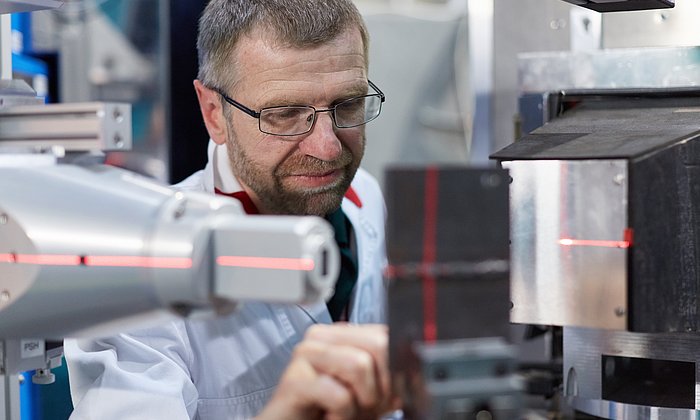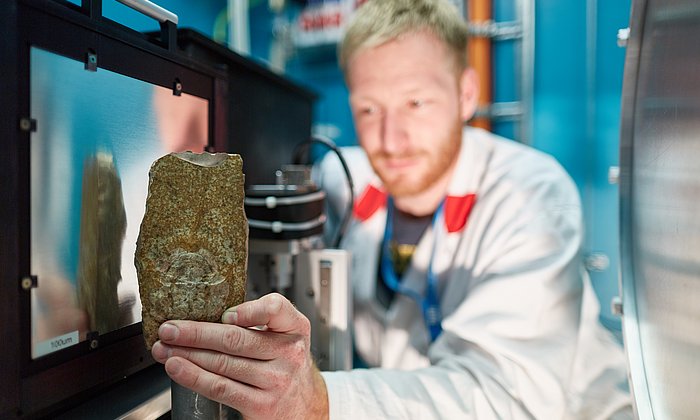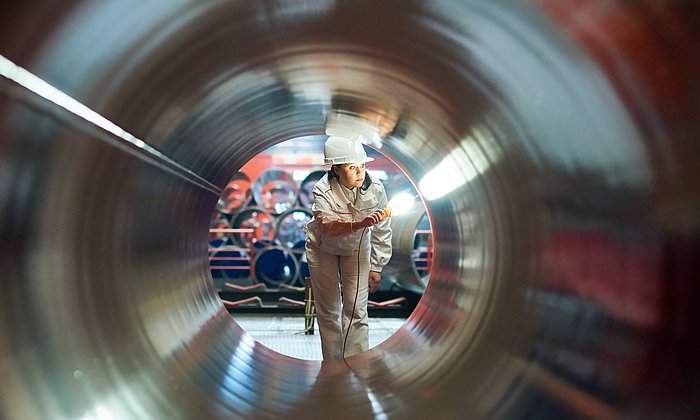Neutrons make movement of ions visible
Solid-state battery: New material class with excellent ion conductivity
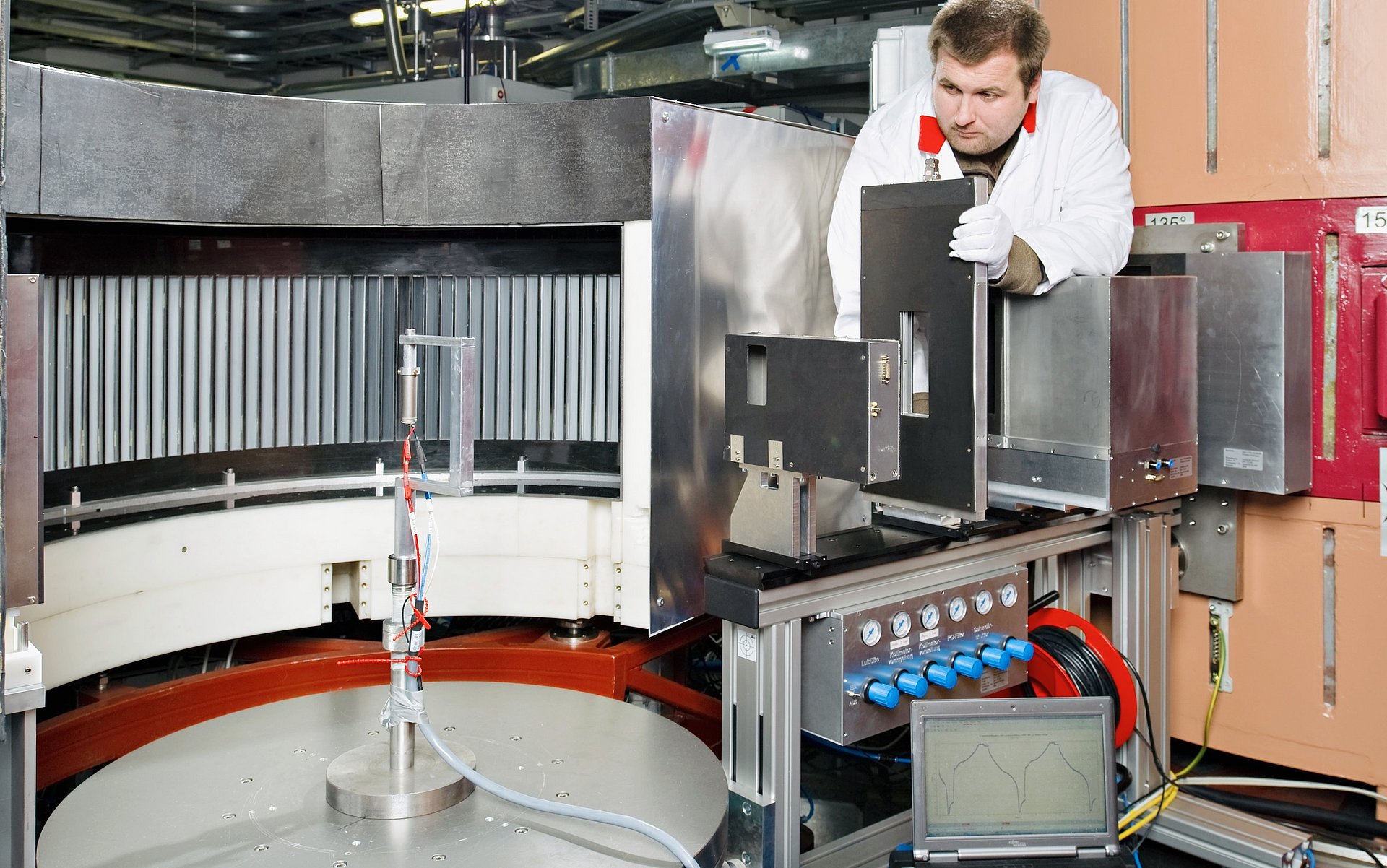
The batteries of the future will have to satisfy high expectations: They will have to be lighter and perform better, have longer service lives, be safer and also less error-prone. Scientists around the world are pursuing these objectives using solid-state technologies: Solid-state batteries contain no liquid, in contrast to traditional rechargeable batteries in which lithium ions move through a liquid electrolyte from the anode to the cathode and back again. In contrast, the electrolyte in solid-state batteries is a solid substance which can neither leak nor burn. In addition, this solid electrolyte helps reduce the battery weight, making it theoretically an ideal alternative.
"But in practice the solid-state electrolytes available up to now, mostly oxidic ceramics or compounds based on sulfur, have proven unable to completely meet expectations," says Prof. Thomas Fässler of the TUM Professorship for Inorganic Chemistry with Focus on New Materials. Together with his team and in close cooperation with TUMint·Energy Research GmbH, he is looking for more efficient electrolytes: "The problem is that lithium ions only diffuse slowly through solid materials. Our objective was to better understand ion transport and then to use this knowledge to increase conductivity."
A light powder shows promise
The result of their efforts is a crystalline powder which is an above-average conductor of lithium ions. It contains no sulfur, but rather phosphorus, aluminum and a comparatively high proportion of lithium. Laboratory measurements have shown that this previously overlooked substance class has a high level of conductivity. Within a very short period of time the chemists successfully created about a dozen new, related compounds, which contain for example silicon or tin instead of aluminum. This broad new material basis makes it possible to quickly optimize material properties.
And why are these materials such good ion conductors? "In order to answer this question, the processes which take place inside the crystals have to be rendered visible," Fässler explains. "But that's not possible with normal laboratory equipment, because the lithium atoms are very light. As a result they can't be localized exactly using X-ray radiation.“
Greater detail with neutron beams
The solution: neutron beams. "The neutrons we have from the research reactor make it possible to find even the lightest of atoms. This is because the neutrons interact with the nuclei of the atoms and not with the atomic shell, as is the case with X-ray radiation," says Dr. Anatoliy Senyshyn, who supervises the powder diffractometer at the FRM II, which was used to analyze the new electrolyte material: "In the past we had already investigated a variety of members of the new and diverse family of solid lithium ion conductors. We can use the neutron diffraction to visualize how the ions use free space in the crystal lattice to move." In the new substance class these free spaces are arranged in such a way that the ions can move equally well in all directions. This is a result of the high degree of symmetry found in the crystals and is probably the cause of the "superionic lithium conductivity" which the TUM team has now been able to observe.
The synthesized powders are thus highly promising electrolyte candidates for future solid-state batteries, says Fässler: "Our basic research has the potential to accelerate the development of higher-performance batteries."
Tassilo M. F. Restle, Stefan Strangmüller, Volodymyr Baran, Anatoliy Senyshyn, Holger Kirchhain, Wilhelm Klein, Samuel Merk, David Müller, Tobias Kutsch, Leo van Wüllen, Thomas F. Fässler:
Super-Ionic Conductivity in ω-Li9TrP4 (Tr= Al, Ga, In) and Lithium Diffusion Pathways in Li9AlP4 Polymorphs, Advanced Functional Materials, 7. September 2022
onlinelibrary.wiley.com/doi/full/10.1002/adfm.202112377
- The research is the product of close collaboration between TUMint·Energy Research GmbH, which, with the support of the automotive industry, is working intensively on the research and development of solid-state battery cells. The University of Augsburg was also a partner in the collaborative effort.
- The project "Industriealisierbarkeit von Festkörperelektrolytzellen" (Potential Industrialization of Solid-State Electrolyte Cells) was funded by the Bavarian Ministry of Economic Affairs, Regional Development and Energy.
Technical University of Munich
Corporate Communications Center
- Monika Weiner / Stefanie Reiffert
- reiffert@zv.tum.de
- presse@tum.de
- Teamwebsite
Contacts to this article:
Prof. Dr. Thomas F. Fässler
Technical University of Munich
Professorship for Inorganic Chemistry with Focus on New Materials
Phone: (+49) 89 289 13131
thomas.faessler@lrz.tum.de
